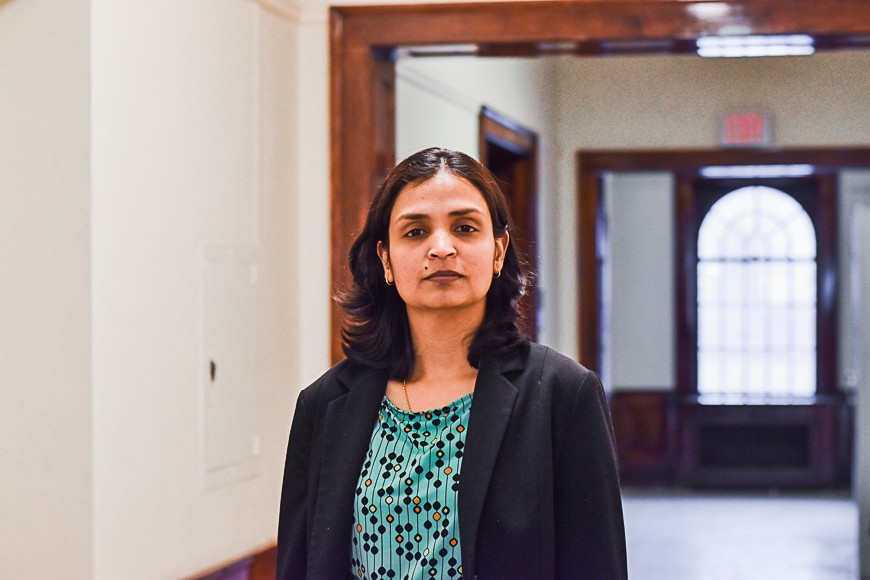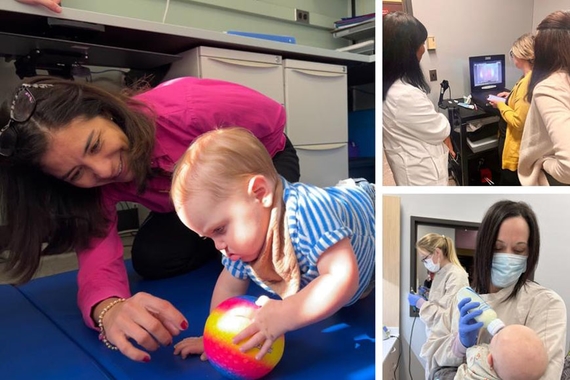The Science of Stuttering
According to The Stuttering Foundation of America, three million people in the United States stutter in some way. These stutters can look like repetitions of certain syllables, prolongations of a letter sound, or unintentional stops in speech. Such language differences can make communication and connection a little more difficult. How can stuttering be better understood and treated, both from a motor function and a cognitive process perspective?
Dr. Jayanthi Sasisekaran, an associate professor in the Department of Speech-Language-Hearing Sciences, focuses on the dual nature of stuttering. Through the Speech Fluency Lab at the University of Minnesota, she studies the psycholinguistic processes of individuals who stutter to improve diagnostic and intervention methods.
Brain Imaging
Stuttering has always been a professional interest, Sasisekaran says, but time spent working on a thesis further inspired new questions surrounding stuttering and how it can be viewed neurologically. She first began with studying word association and stutterers, but she didn’t find any significant differences. Despite the results, the thesis work shifted her thinking to mold the approach she takes today. “It started off with looking at [stuttering] as a language factor and then evolved into [looking at] it as language and motor [factors],” Sasisekaran explains.
With the help of a Grant-In-Aid and a Brain Imaging grant from the University of Minnesota, Sasisekaran turned her focus to examining dual-tasks and brain activity. Dual-task performance happens when individuals have to do two tasks at once. For Sasisekaran, her tests have a person speak while also performing another task, such as reading sentences or made-up words. Specifically, she tests to determine if there are any significant differences in how adults and children who stutter differ in task performance and in brain wave activity.
Research in the Fluency Lab
The majority of this research takes place within the Speech Fluency Lab, located on the University of Minnesota Twin Cities campus. Sasisekaran first began working in the Fluency Lab in 2008, shortly after she arrived at the University. In her words, the function of the research done at the lab is to “understand the contributions of psycholinguistic, cognitive, and speech motor processes to fluent speech production in children and adults.” From there, Sasisekaran and her team seek to understand individual differences in speech and what those differences mean in understanding stuttering.
To properly examine stuttering, the lab is split into behavior studies and speech motor studies. In the behavior studies portion of the lab, researchers run protocol to collect response time and data accuracy. “The studies are designed to understand performance in language tasks or tasks requiring participants to divide and attend to several tasks performed concurrently,” says Sasisekaran.
On the other side, in speech motor studies, high-resolution instruments allow researchers to track speech movements as the participants are asked to speak or read. Participants, both stuttering and not, are then asked to speak in various levels of difficulty. Sasisekaran’s team utilizes research tools such as MATLAB and Excel to examine the data.
Sasisekaran sees possibilities for her research to be applied to a broader audience. By examining stuttering through brain imaging techniques, she sees applications in diagnosing and understanding how language development interacts with the onset of stuttering. Monitoring differences in brain waves based on stuttering severity might be used “as a diagnostic tool at a later point,” Sasisekaran explains.
All Hands on Deck
While many labs on campus involve students as researchers alongside faculty, the Speech Fluency Lab is different in that Sasisekaran’s student base involves a wide age spectrum. First, she works closely with Dean’s First-Year Research and Creative Scholars program. The program encourages faculty to submit research proposals and pairs students with similar interests to build connections and learn in a real research setting. At the same time, she works with an active graduate and doctoral program. Students working alongside Sasisekaran gain experience doing data collection and analysis.
Research like Dr. Sasisekaran’s means taking steps toward a future of stronger communication and deeper connection without language barriers. While their research is just beginning, she hopes to see her lab continue to expand to accommodate more researchers and more speech studies. The grant will continue funding her research through 2020.
This story was written by an undergraduate student in CLA.



